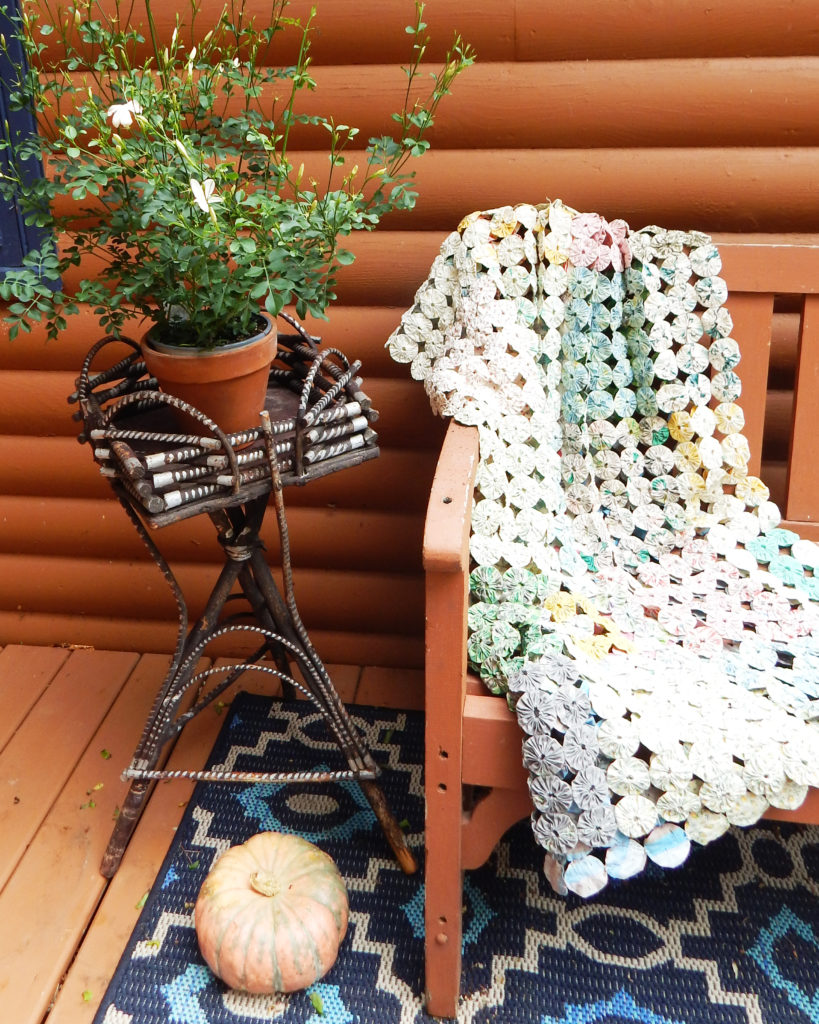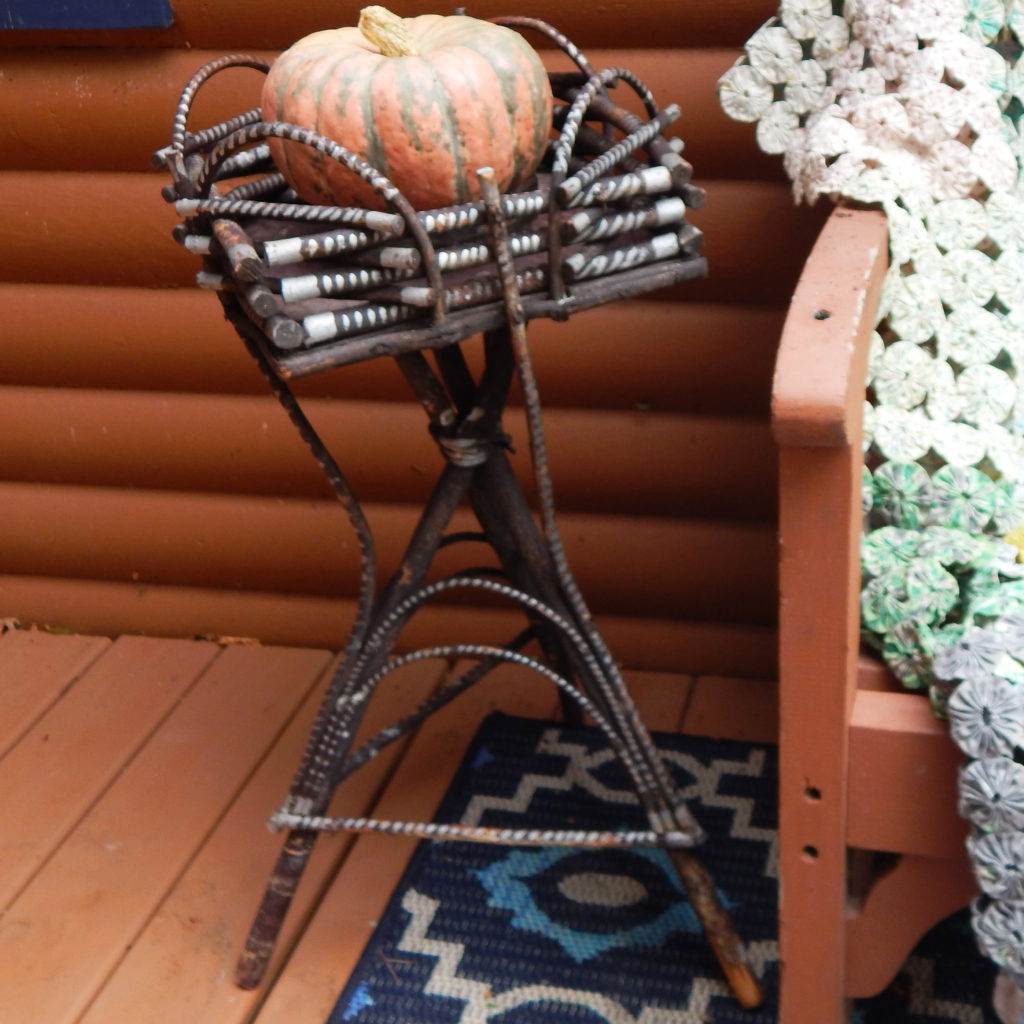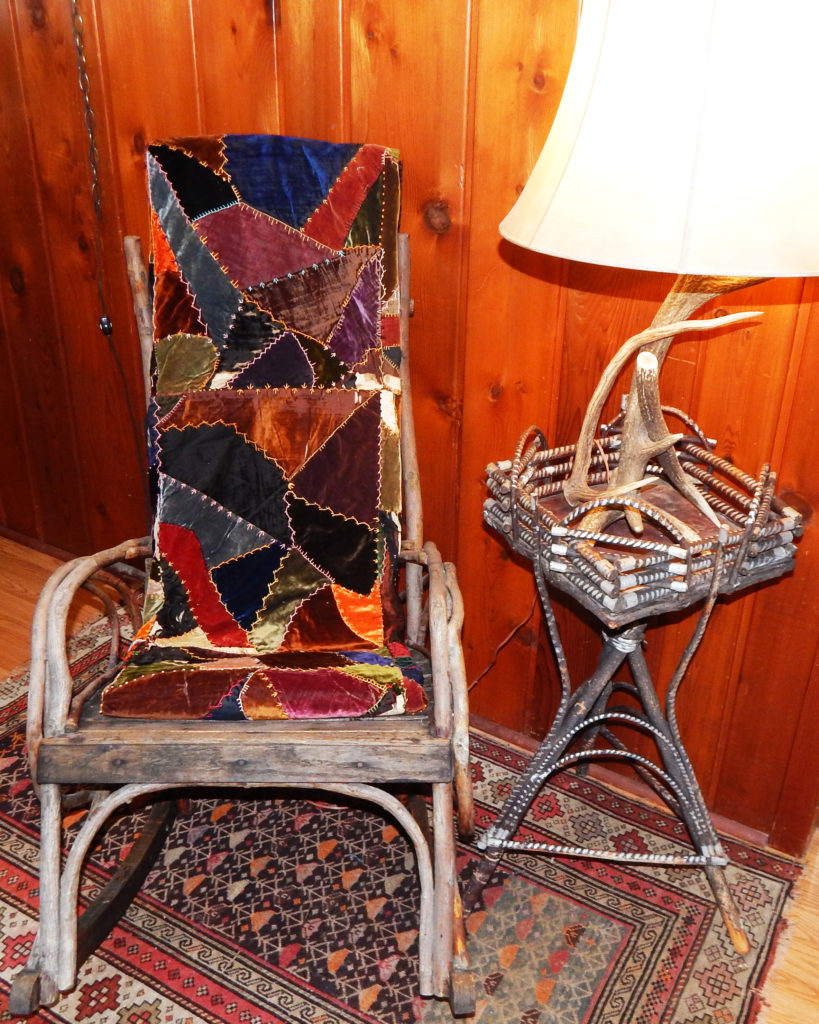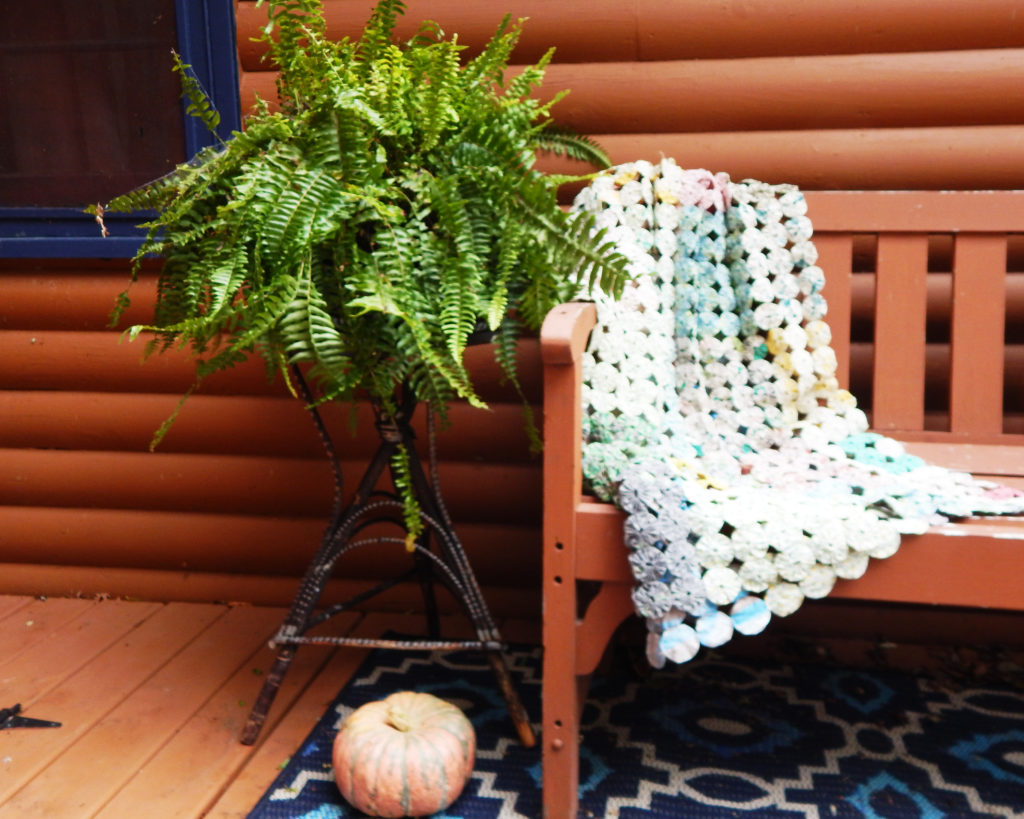
What is Adirondack Style?
There are some decor items that just belong in an Adirondack style home.
They’re also rare and hard to find, so we always buy them when we see them.
We’ve been lucky recently and have found some excellent examples of these classics, and I thought it might be fun to take a closer look at some of these antique treasures.
So for the next few weeks, each of our blog posts will feature one of the antique handmade Adirondack decor items that every camp owner would be proud to own.

Before we get started, it might be useful to take a quick look back at the history of the Adirondack Great Camps and the origin of Adirondack style.
According to a wonderful issue of Country Living magazine devoted to Adirondack style and published in September 1989, the Golden Age of the 6-million acre Adirondack park occurred from 1870 to 1930.
William H. H. Murray’s Adventures in the Wilderness, published in 1869, created a sensation. Murray’s book captivated an audience that was just beginning to embrace the outdoors. Only a generation before, the woods and waters were seen as places to be endured or conquered, not enjoyed, says Elizabeth Folwell, Adirondack historian and author of the introduction of our favorite book, Adirondack Style by Ann Stillman O’Leary.
Folwell continues, ” As Brendan Gill wrote in a 1978 New Yorker essay, ‘In a mere handful of generations, people went from fearing solitude to seeking it, having built cities so crowded and uncomfortable and disease-ridden as those they had left behind in Europe, they cast about for a means of escaping them. And so the first summer places came into existence.”
Initially, the sheer difficulty of the trip made the Adirondacks an exclusive place. The first summer residents of the Adirondacks were East Coast captains of industry who built family compounds on hundreds of acres of wooded lakefront.
Eventually middle class people could not get enough of this back-to-nature approach, and the concept of a distinct Adirondack style in architecture and furniture was nationally recognized by 1910.

The stick and twig furniture from the woods in the era of the Great Camps was made by caretakers, guides and a handful of talented craftsmen, out of imagination born from winters of solitude. Craftspeople kept busy during the bitter winters by fashioning “tree art” in which every part of the tree – root, trunk, twig, bark, pinecone – was employed in utterly imaginative chairs, tables, benches and more.
Today Adirondack style embodies an homage to the past and continues to be dictated by the indigenous materials of the mountains like logs and stone. The style celebrates a return to craftsmanship and appreciation of nature.
The antique Adirondack twig fern stand pictured here offers a wonderful example of the style.The plant stand was a favorite in the Great Camps as it offered an opportunity to harmonize with the natural setting and add natural accents to rooms and porches.

The antique plant stand we have available was made in the traditional 3-leg teepee design and is elaborately embellished with bent twig pieces and beautifully painted with silver accents. It must have been treasured by its owners, because it doesn’t have a single broken or missing twig.

Like This Post?
Please subscribe to our blog to receive new posts by e-mail. We will not share your information with anyone.